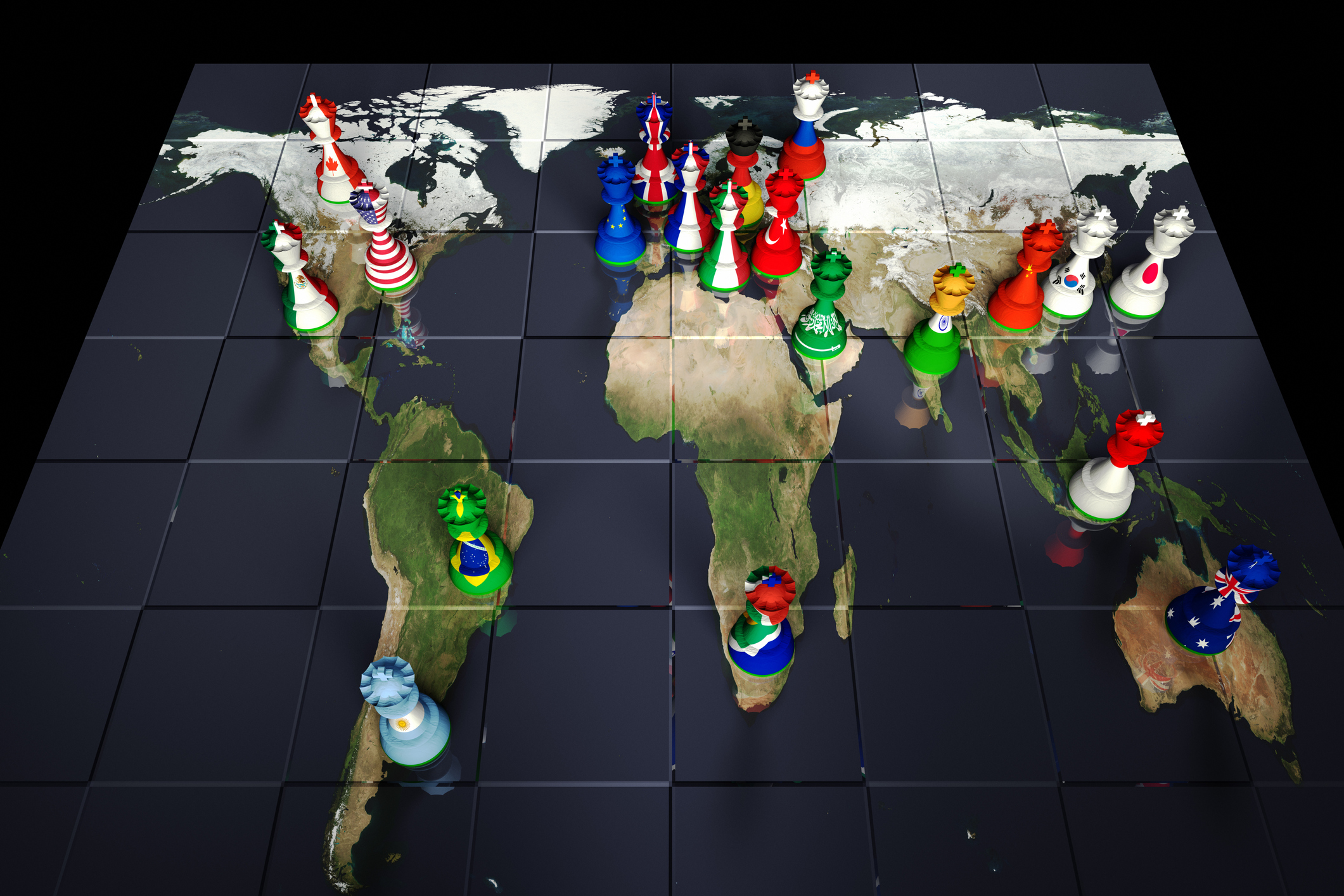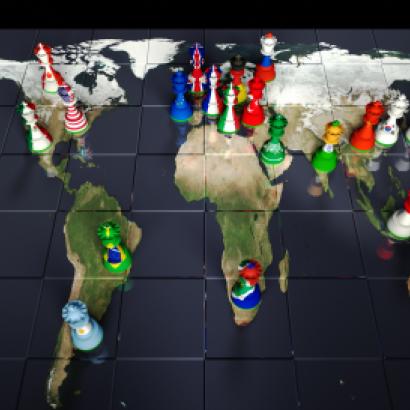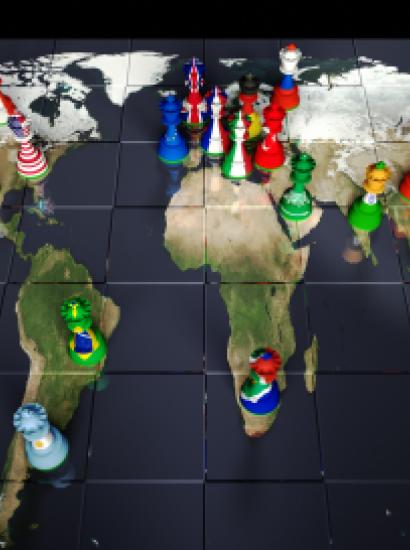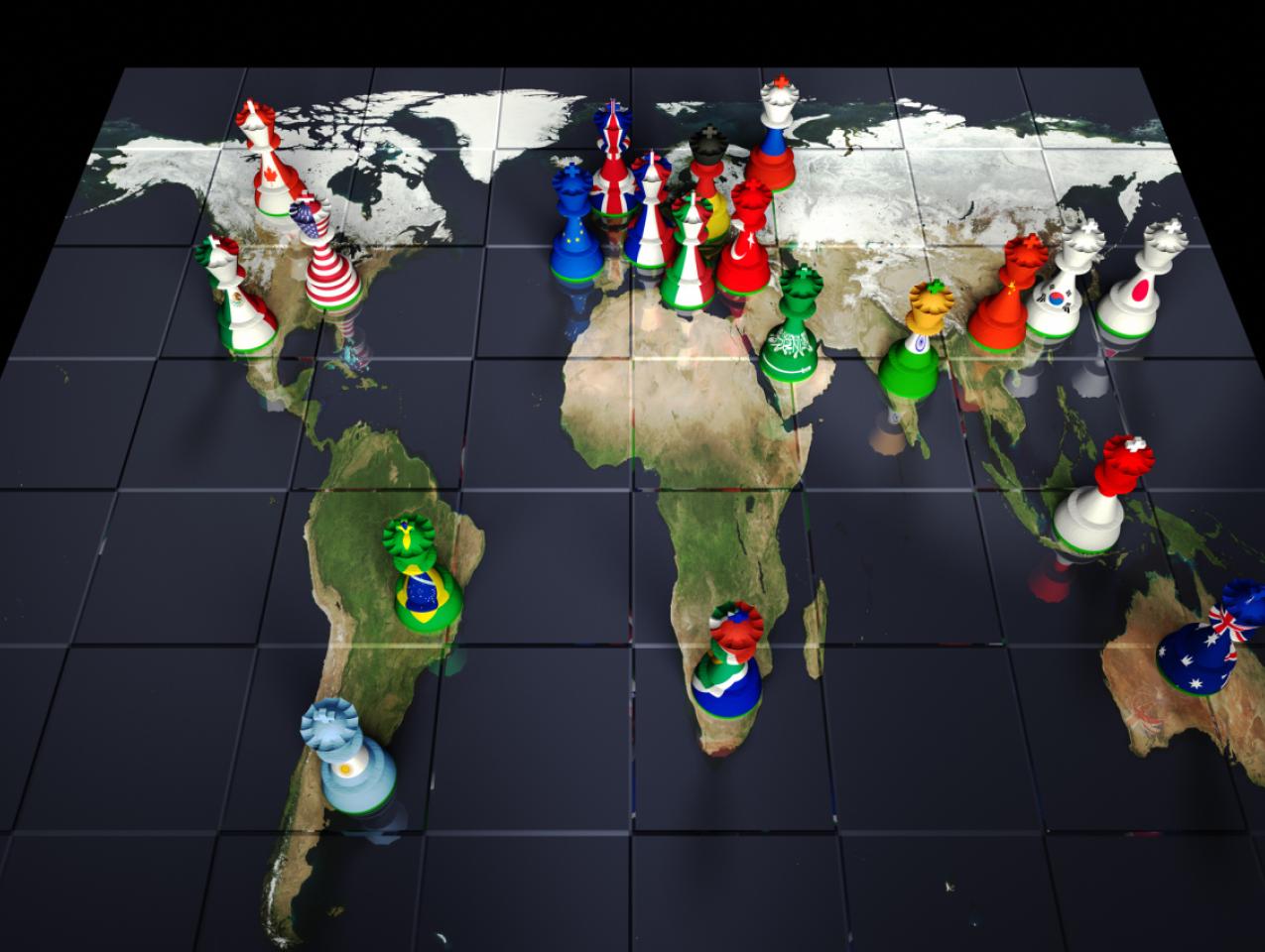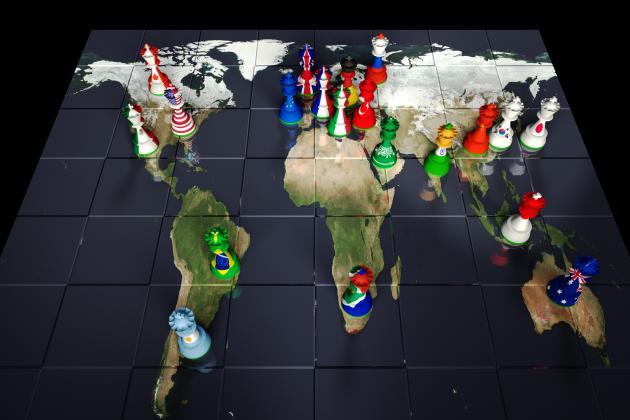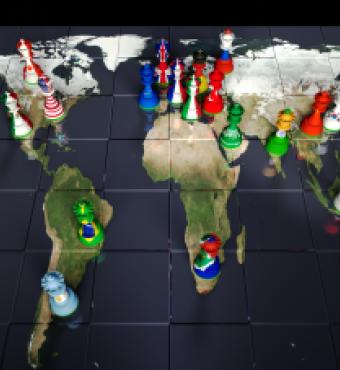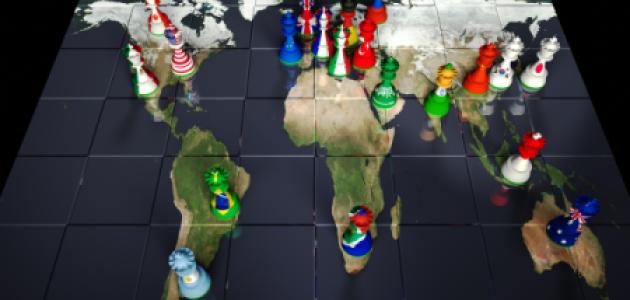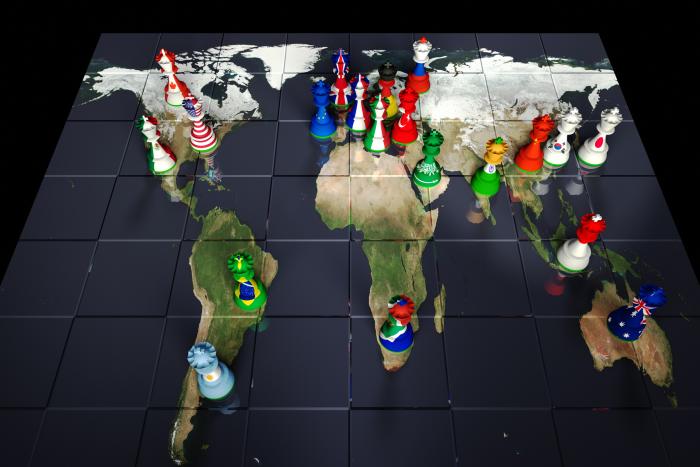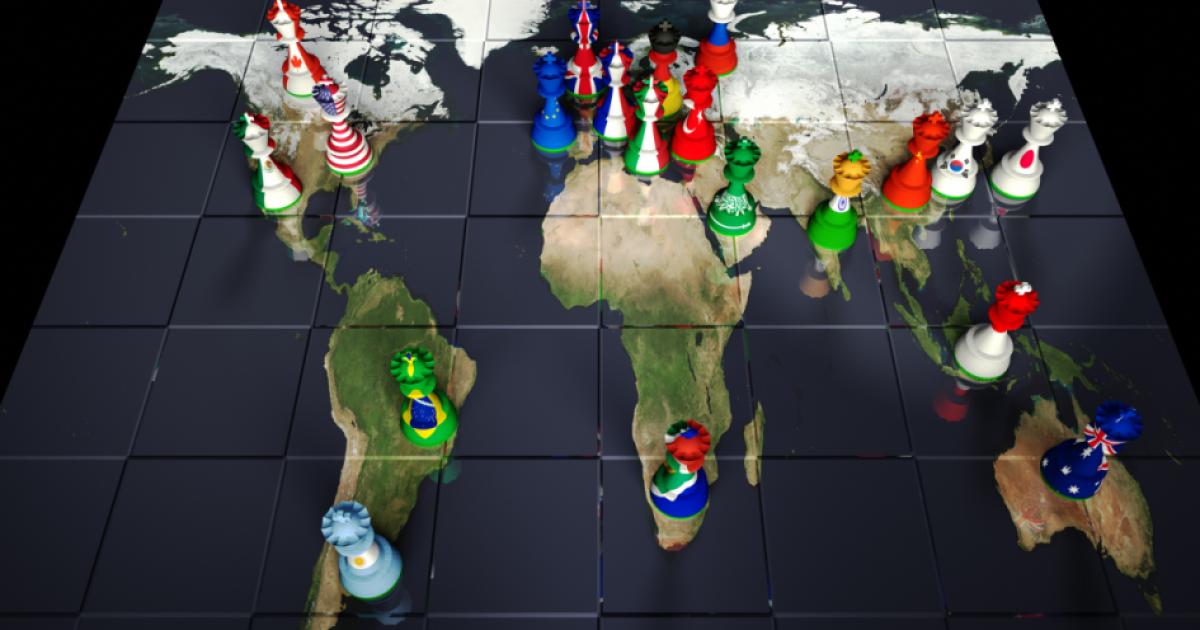Strategy starts with understanding our interests and the objectives that flow from those interests. In the Middle East, our interests have evolved but perhaps less than many may think. After the Second World War, when the US assumed more global responsibilities, Democratic and Republican Presidents saw the Middle East as vital to our interests because of its oil and geo-strategic centrality. The unimpeded flow of its oil was necessary for global economic health and for the reconstruction of Europe—which was perceived as an essential national security priority. The fact that it connected different continents and was a key logistic hub for our forces during the war deepened the belief that the region was crucial to our security.
Interestingly enough, for the Eisenhower Administration, the Middle East was the main focus of competition with the Soviets. True, that was because the “iron curtain” already divided Europe, and the Korean war was now behind us. Still, there is no denying how focused President Eisenhower and Secretary of State Dulles were on the region. They tried and failed to organize a regional alliance system to keep the Soviets out of the Middle East, never understanding that the Soviets were our priority not that of the regional states. Similarly, President Eisenhower adopted the Eisenhower Doctrine after he belatedly recognized that his opposition to the British and French during the Suez war had created a vacuum that the Soviets could fill in the region. As a result, Eisenhower promised aid and even American forces to any country in the region that was threatened by the Soviets or their clients in the Middle East. President Eisenhower would invoke his doctrine and send US forces into Lebanon July 1958 after the coup in Iraq—a coup that he believed threatened the entire western position in the region.
The fear that the Soviets would dominate this region with its oil and its strategic significance drove the intervention. In fact, if there is one interest defined as vital from that period until today it is that no hostile power should gain leverage over the flow of oil from the region. Even the end of the Cold War did not affect that view—simply the perception of who constituted the danger. One major reason for the first Gulf war in 1991 was the fear of Iraq gaining dominant influence over the flow of oil as a result of its invasion and absorption of Kuwait. Today, Iran poses a number of threats, but its dominance in the region would once again pose the prospect of a hostile power in a position to manipulate the oil supply.
Of course, oil and strategic centrality are not now nor were they in the past the sum total of our interests in the Middle East. To preserve our relations with the Arabs, administrations, starting with Eisenhower, made Arab-Israeli peace a core interest, believing the absence of peace would threaten our ties to the Arabs. Later, the pursuit of peace also would lead to a commitment to Israeli security being an interest. After 9/11, counter-terror and proliferation of WMD—and the need to prevent the worst weapons from falling into the worst hands—also became driving US interests in the region. Inevitably, counter-terror concerns led to our need to counter extremist ideologies.
Because of the shale revolution and the re-emergence of the US as an exporter of oil, there are those who say our energy independence means we no longer need be so concerned about who controls the flow of oil in the Middle East. Such a view ignores that there is only one pool of energy worldwide. Should there be a major disruption of oil coming from the Middle East, it would drive energy prices up exponentially, including our own, cause a severe global recession, and undermine the economy of many of our allies. Our own economy would not remain immune to these consequences—meaning we have a continuing stake in preventing great disruptions of the oil flow from the Middle East whether it results from war, revolution or a hostile power seeking to gain leverage over the US or its allies.
Do all of the other interests that emerged over time remain as meaningful as they were in the past? Preventing proliferation of WMD in the region remains a vital interest given not just terrorists getting their hands on the weapons but the continuing high potential for conflicts in the area. Similarly, fighting extremist ideologies—especially radical Islamist ideologies—remains a very potent need. 9/11 reflected al Qaeda’s ideology—one that lives on with ISIS and its various affiliates; this ideology sees our very existence as a threat and requires carrying the war to us or inspiring its adherents who live in America to carry out acts of terror. But it is not only the ideology that represents a continuing threat: the pathologies of the region don’t tend to stay in the Middle East. The war in Syria produced not just horrific fatalities, over 500,000, but not surprisingly a flow of refugees to Europe that has not only threatened the underpinnings and values of the European Union, but triggered a wave of xenophobic and populist nationalism and all of its intolerant trappings. One other way to think about this is that wars and failed or failing states in the Middle East will affect us and our allies.
The foregoing suggests that our interests that we must address are expanding in the Middle East not contracting. Ironically, there is one traditional interest that is less prominent now: we no longer need to produce Arab-Israeli peace to preserve our ties to leading Arab states. As the main Sunni Arab states have become more preoccupied with Iran and its use of Shia militia proxies—and Sunni Islamist threats stemming from the Muslim Brotherhood and ISIS—they have actually turned quietly to the Israelis for help on intelligence and even operational security matters. Indeed, questions about American reliability and staying power that began under Obama have continued under Trump and led to very tangible cooperation between Israel and a number of its regional neighbors—albeit largely under the radar . From that standpoint, Arab leaders remain sufficiently sensitive to the Palestinian issue--and it being exploited against them with their “street”—that they keep that cooperation largely private. That does not alter its reality or their stake in it or their readiness to put their security interests first whether it means working with the Israelis or the United States.
As someone who has spent the last thirty years trying to promote and advance Arab-Israeli peace, I remain committed to it. It would remove one of the sources of instability in the region and more open cooperation between Arabs and Israelis could also address other causes of instability in the area—and even a looming threat caused by climate change and increasing drought conditions.1[1]That said, it is hard to imagine future US presidents repeating what past American presidents declared: that Arab-Israeli peace is a vital interest of the United States and the key to stability in the Middle East. It is not.
So if stability is essential—whether for preserving the oil flow or for preventing conflicts or failed states from providing fertile breeding grounds for extremist ideologies—what principles should guide our strategy now?
First and foremost, prevent vacuums from forming. Nature abhors a vacuum and in the Middle East the worst actors always fill them. We created the vacuum in Iraq in 2003 and without having a good idea about how to fill it, we triggered a terrible sectarian war. In Syria, our policy of avoidance, starting in 2011, contributed mightily to the vacuum that was filled by the Russians, Iranians and their Shia militia proxies and gave space for ISIS to emerge from al Qaeda’s remnants with a vengeance. The answer is not for us on our own to fill the vacuum with tens of thousands of American troops on the ground. That is clearly a mistake and bound to create a backlash. Rather we need to work with local partners who are credible, will fight for their own reasons and who only need American support. The irony is that the Obama Administration came up with the right model working with the Syrian Democratic Forces—led by the Kurds but with Arabs largely fighting for their home areas. Yes, it was too little, too late, but it was a model that eventually was working with limited US involvement. (The Bush Administration with the Awakening Councils involving the Sunni tribes did something similar in its last two years.)
Secondly, whether our partners are states or sub-state actors, focus on governance, rule of law, inclusiveness, economic progress and respect for minority rights is vital. This is a tall order but it is the key to stability within states or in securing effective partnerships. One larger problem we face in the Middle East is the absence of a successful model of development in the larger states. That creates a vacuum of a different sort—and one that leads to alienation exploited in the past by secular radicals like Nasser and Saddam Hussein and today by Islamists. One of the reasons we have a stake in the Saudi National Transformation (NTS) plan is that it is a model for modernization. While a revolution from above was the only way to initiate it and to have nationalism replace Wahhabism as the source of legitimacy, the key ultimately to its success is for the Crown Prince’s authoritarian and impulsive tendencies to be tempered so they don’t undermine the very objectives he seeks. And, those objectives would have a far-reaching effect in the region.2[2]Thirdly, we won’t have many partners if they feel their security is threatened. We need to stick by the security commitments we have made and demonstrate our steadfastness. And, of course, we need to effectively counter those who threaten security and stability of the region. There is no question that the Islamic Republic of Iran both for offensive and defensive reasons seeks to dominate the region. Its leaders need to understand that what the Qods Forces and Shia militias do to threaten or subvert others will raise the costs to them as they measure costs. The Trump Administration sees sanctions as its main coercive tool. It is using economic pressure both to get the Iranians to return to the negotiating table on the nuclear question and to squeeze its leaders to the point where they will decide to stop their expansion in the area. Without greater political isolation, without more pressure from other sources, and probably without some signal of what the Iranians could gain, the Iranians are not likely to respond; so far, they continue in the face of sanctions to extend their control and military presence in Syria and Iraq, provide more assistance to Hamas and Islamic Jihad, and to furnish rockets to the Houthis. Can we work with the Israelis and Arab states to create more effective means to counter the Qods Forces and the Shia militias? Can we create more outreach from the Gulf states to the Iraqi government and shore up the Iraqi military to limit the weight of key Shia militias in Iraq? Can we give the Russians a reason to do more to limit the character of the Iranian presence in Syria because of the dangers for them and the risk of drawing us back in given the collision course that Israel and Iran are on, with Iran determined to create in Syria what it has in Lebanon and Israel just as determined to prevent it? These are all questions that may affect the choices the Iranians will make.
No short strategy paper can cover all the challenges in the region. Managing a complicated relationship with Turkey is a case in point. But providing key principles and guidelines for a policy based on our interests and what can be done to pursue them is a starting point.







